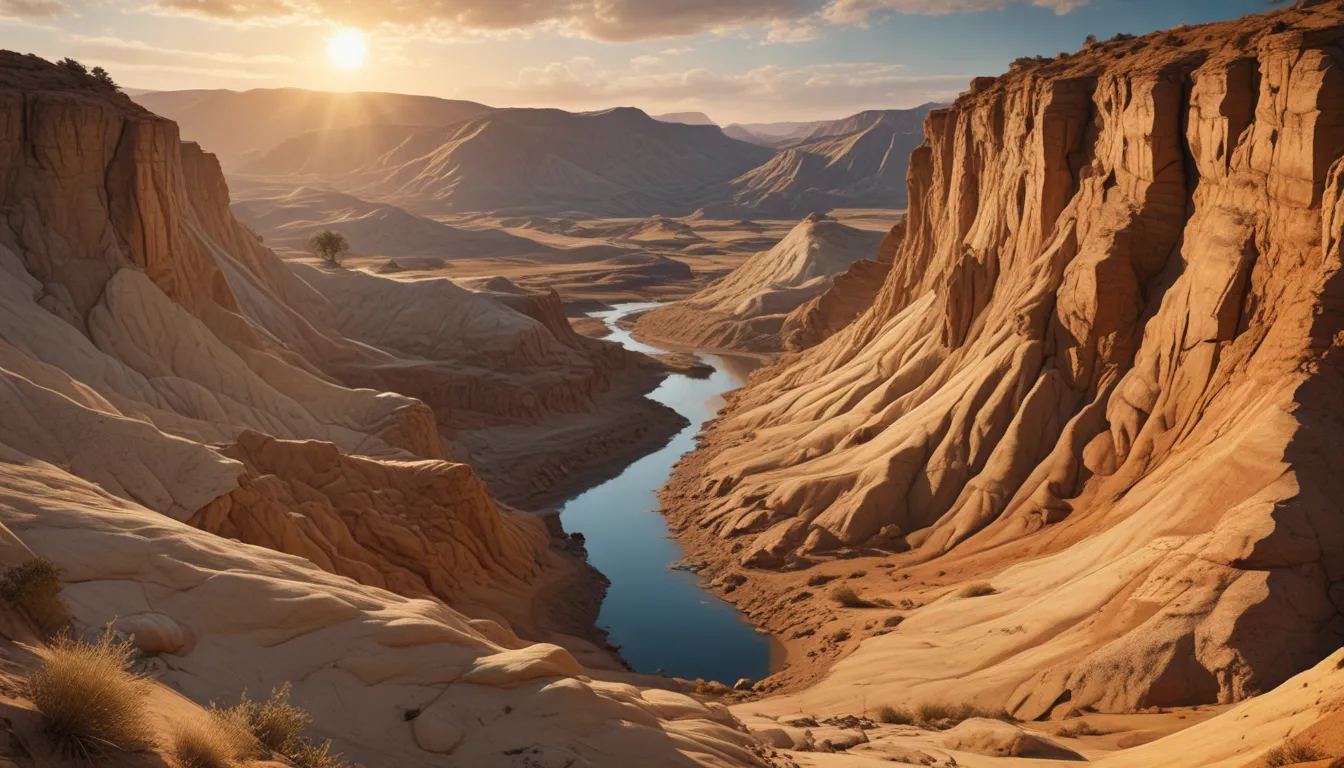A Note About Images: The images used in our articles are for illustration purposes only and may not exactly match the content. They are meant to engage readers, but the text should be relied upon for accurate information.
Welcome to the world of loess, a captivating geological phenomenon that has intrigued scientists and nature enthusiasts for centuries. Loess, a unique type of sedimentary deposit formed by the accumulation of fine particles like silt and clay, is renowned for its global distribution and incredible formations. Join us on a journey as we unravel the astounding facts about loess, exploring its formation, significance, and diverse applications.
Unveiling the Mysteries of Loess
Loess is a remarkable geological deposit comprised of fine-grained sediment, primarily silt-sized particles. This wind-blown sediment is typically found in areas with high winds and minimal vegetation, resulting in its distinct characteristics. The global distribution of loess in regions such as the United States, China, Europe, and South America offers valuable insights into the Earth’s history, climate patterns, and environmental changes.
The Great Wall of China owes its Existence to Loess
One of the most iconic examples showcasing the significance of loess is the Great Wall of China. The stable foundation provided by loess deposits played a crucial role in the construction of this architectural marvel. The fertile soil properties of loess make it highly suitable for agriculture, supporting plant growth with its water-retaining capabilities and essential nutrients.
Enriching Agricultural Lands with Fertile Loess
Loess is renowned for its exceptional fertility, making it an ideal medium for agriculture. The fine-grained particles possess excellent water-retaining properties and provide essential nutrients for plant growth. Regions abundant in loess deposits have become hubs for agricultural activities, benefiting from the rich soil quality that supports thriving crops.
Vulnerable to Erosion: The Fragile Nature of Loess
Despite its agricultural advantages, loess is vulnerable to erosion due to its loose structure. Wind and water can easily transport and redistribute loess deposits, leading to significant changes in landscapes and landforms over time. Understanding the erosion dynamics of loess is crucial for sustainable land management practices.
Preserving Ancient Treasures: Fossils and Artifacts in Loess
Loess deposits serve as a repository of ancient artifacts and fossils, offering valuable insights into past ecosystems and civilizations. The fine-grained sediment has preserved numerous fossils of plants, animals, and human artifacts, enriching archaeological studies and contributing to our understanding of historical landscapes.
Creating Picturesque Landscapes: The Beauty of Loess Formations
Loess landscapes are renowned for their picturesque rolling hills and unique colors, shaped by the erosion of deposits over time. The enchanting landforms created by loess attract visitors and photographers worldwide, showcasing the natural beauty and geological significance of these formations.
Versatile Applications: Loess in Construction and Industry
The versatility of loess extends to various industries, including construction and pottery production. Its stability, insulating properties, and moisture retention capabilities make it a valuable resource for construction projects. Loess has been used for building foundations, road construction, and the production of ceramics over centuries, highlighting its practical applications.
Delving Deeper into the World of Loess
As we explore the wonders of loess, we uncover a wealth of knowledge about its geological significance, cultural importance, and environmental benefits. From shaping landscapes and supporting agriculture to preserving ancient artifacts, loess continues to captivate scientists and enthusiasts with its enigmatic charm. The mysteries of aeolian processes, responsible for the formation of loess deposits, offer a fascinating realm of exploration into the complexities of our planet’s geological history.
Conclusion: Unraveling the Enigma of Loess
Loess stands as a testament to the intricate processes at work in shaping our planet’s surface. Its unique characteristics, global presence, and multifaceted applications underscore its significance as a geological wonder. By gaining a deeper understanding of loess and its impact on our environment, we can appreciate the beauty and complexity of this remarkable sedimentary deposit.
In conclusion, the exploration of loess unveils a world of wonders that captivate the imagination and inspire further discovery. From its geological origins to its practical uses, loess continues to fascinate and enrich our understanding of the natural world. Embrace the mysteries of loess and embark on a journey of exploration into the depths of this captivating geological phenomenon.
FAQs: Unveiling the Secrets of Loess
- Q: What is loess?
-
A: Loess is a loose, fine-grained sediment predominantly composed of silt-sized particles, formed by the accumulation of wind-blown dust. It is known for its high fertility and distinctive yellowish color.
-
Q: Where is loess found?
-
A: Loess is found in various regions worldwide, including Europe, Asia, North America, and South America. Notable areas with significant loess deposits include the Loess Plateau in China, the Mississippi Valley in the United States, and the Danube Basin in Europe.
-
Q: How is loess formed?
-
A: Loess is formed by the accumulation of wind-blown dust particles carried over long distances before settling in specific locations. These particles are typically derived from the erosion of rocks and minerals in distant regions.
-
Q: What are the main characteristics of loess?
-
A: Loess is characterized by its high porosity, excellent water-retention capacity, and fertility. It also has the unique ability to preserve ancient artifacts and fossils due to its compact and protective nature.
-
Q: How does loess contribute to soil fertility?
-
A: Loess contributes to soil fertility by holding significant amounts of water and providing essential nutrients for plant growth. Its rich nutrient content and water-retention properties make it an ideal medium for agricultural cultivation.
-
Q: What are the environmental benefits of loess?
-
A: Loess plays a vital role in preventing soil erosion, acting as a natural filter and retaining pollutants to reduce sediment runoff into water bodies. Its water-retention capabilities also help mitigate the impact of heavy rainfall on landscapes.
-
Q: Can loess be used for construction purposes?
-
A: Yes, loess has been utilized as a construction material for centuries due to its compact nature and load-bearing capacity. It is commonly used in building foundations, road construction, and the production of ceramics.
-
Q: How does loess contribute to archaeological studies?
- A: Loess deposits have proven invaluable to archaeologists and paleontologists, preserving ancient artifacts and fossils with remarkable detail. These deposits offer insights into past civilizations and the natural history of different regions.
The exploration of loess unveils a world of wonders that captivate the imagination and inspire further discovery. Embrace the mysteries of loess and embark on a journey of exploration into the depths of this captivating geological phenomenon.






